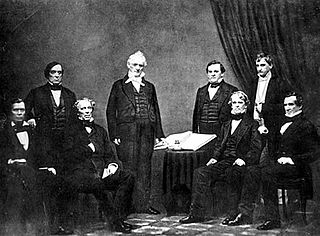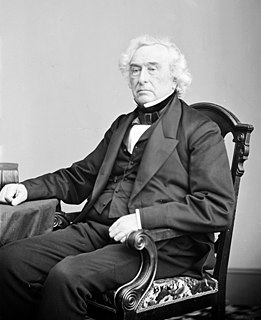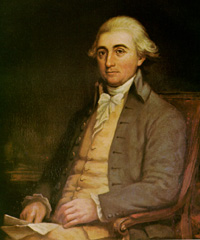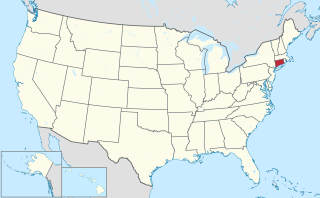
The 1792 United States presidential election was the second quadrennial presidential election. It was held from Friday, November 2, to Wednesday, December 5, 1792. Incumbent President George Washington was elected to a second term by a unanimous vote in the electoral college, while John Adams was re-elected as vice president. Washington was essentially unopposed, but Adams faced a competitive re-election against Governor George Clinton of New York.

The 2nd United States Congress, consisting of the United States Senate and the United States House of Representatives, met at Congress Hall in Philadelphia, Pennsylvania, from March 4, 1791, to March 4, 1793, during the third and fourth years of George Washington's presidency. The apportionment of seats in the House of Representatives was based on the provisions of Article I, Section 2, Clause 3 of the United States Constitution. Additional House seats were assigned to the two new states of Vermont and Kentucky. Both chambers had a Pro-Administration majority.

The 3rd United States Congress was a meeting of the legislative branch of the United States federal government, consisting of the United States Senate and the United States House of Representatives. It met at Congress Hall in Philadelphia, Pennsylvania from March 4, 1793, to March 4, 1795, during the fifth and sixth years of George Washington's presidency.

Isaac Toucey was an American politician who served as a U.S. senator, U.S. Secretary of the Navy, U.S. Attorney General and the 33rd Governor of Connecticut.

Francis Granger was an American politician who represented Ontario County, New York in the United States House of Representatives for three non-consecutive terms. He was a leading figure in the state and national Whig Party, particularly in its moderate-conservative faction. He served as a Whig vice presidential nominee on the party's multi-candidate 1836 ticket and, in that role, became the only person to ever lose a contingent election for the vice presidency in the U.S. Senate. He also served briefly in 1841 as United States Postmaster General in the cabinet of William Henry Harrison. In 1856, he became the final Whig Party chairman before the party's collapse, after which he joined the Constitutional Union Party.

The Delaware State House of Representatives is the lower house of the Delaware General Assembly, the state legislature of the U.S. state of Delaware. It is composed of 41 Representatives from an equal number of constituencies, each of whom is elected to a two-year term. Its members are not subject to term limits. The House meets at the Delaware Legislative Hall in Dover.

Elections to the United States House of Representatives for the 3rd Congress were held in 1792 and 1793, coinciding with the re-election of George Washington as President. While Washington ran for president as an independent, his followers formed the nation's first organized political party, the Federalist Party, whose members and sympathizers are identified as pro-Administration on this page. In response, followers of Thomas Jefferson and James Madison created the opposition Democratic-Republican Party, who are identified as anti-Administration on this page. The Federalists promoted urbanization, industrialization, mercantilism, centralized government, and a broad interpretation of the United States Constitution. In contrast, Democratic-Republicans supported the ideal of an agrarian republic made up of self-sufficient farmers and small, localized governments with limited power.

Elections to the United States House of Representatives for the 2nd Congress took place in 1790 and 1791, in the middle of President George Washington's first term. While formal political parties still did not exist, coalitions of pro-Washington (pro-Administration) representatives and anti-Administration representatives each gained two seats as a result of the addition of new states to the union.
Joshua Coit was an eighteenth-century American lawyer and politician. He served as a United States Representative from Connecticut.

Thomas Ruggles Gold was a United States Representative from New York.

United States gubernatorial elections were held on November 6, 1990, in 36 states and two territories. Most elected in these elections would serve for a 4-year term, while those in New Hampshire, Rhode Island, and Vermont would serve for a 2-year term.

Some type of election in Connecticut occurs annually in each of the state's cities and towns, the exact type of which is dependent on the year. Elections for federal and statewide offices occur in even-numbered years, while municipal elections occur in odd-numbered ones. The office of the Connecticut Secretary of State oversees the election process, including voting and vote counting.

The 2006 United States House of Representatives elections in Connecticut were held on November 7, 2006, to elect the five members of the U.S. House, one from each of the state's congressional districts, to represent Connecticut in the 110th Congress. The elections coincided with a state gubernatorial election and a U.S. Senate election, as well as with Congressional elections in other states.
The United States Senate elections of 1792 and 1793 were elections of United States Senators that coincided with President George Washington's unanimous re-election. In these elections, terms were up for the ten senators in class 2.

The 1793 United States House of Representatives elections in New York were held in January 1793, to elect 10 U.S. Representatives to represent the State of New York in the United States House of Representatives.

Connecticut elected all five of its representatives at-large on a general ticket on September 20, 1790.

The 1792 United States elections elected the members of the 3rd United States Congress. Congress was broadly divided between a Pro-Administration faction supporting the policies of George Washington's administration and an Anti-Administration faction opposed to those policies. Due to this, the Federalist Party and the Democratic-Republican Party were starting to emerge as the distinct political parties of the First Party System. In this election, the Pro-Administration faction maintained control of the Senate, but lost its majority in the House.

Following is a table of United States presidential elections in Connecticut, ordered by year. Since its admission to statehood in 1788, Connecticut has participated in every U.S. presidential election.

The 2018 United States House of Representatives elections in Connecticut were held on Tuesday, November 6, 2018, to elect the five U.S. Representatives from the state of Connecticut, one from each of the state's five congressional districts. The elections coincided with the gubernatorial election, as well as other elections to the House of Representatives, elections to the United States Senate, and various state and local elections.

The 1792 United States presidential election in Connecticut took place between November 2 and December 5, 1792, as part of the 1792 United States presidential election. The state legislature chose nine members of the Electoral College, each of whom, under the provisions of the Constitution prior to the passage of the Twelfth Amendment, cast two votes for President.














